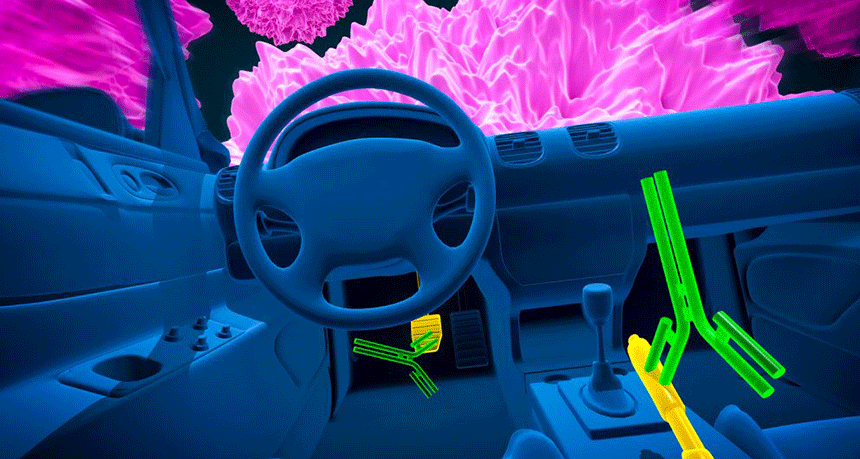
Tina Hesman Saey
Senior Writer, Molecular Biology, Science News
Science News senior writer Tina Hesman Saey is a geneticist-turned-science writer who covers all things microscopic and a few too big to be viewed under a microscope. She is an honors graduate of the University of Nebraska-Lincoln where she did research on tobacco plants and ethanol-producing bacteria. She spent a year as a Fulbright scholar at the Georg-August University in Göttingen, Germany, studying microbiology and traveling. Her work on how yeast turn on and off one gene earned her a Ph.D. in molecular genetics at Washington University in St. Louis. Tina then rounded out her degree collection with a master’s in science journalism from Boston University. She interned at the Dallas Morning News and Science News before returning to St. Louis to cover biotechnology, genetics and medical science for the St. Louis Post-Dispatch. After a seven year stint as a newspaper reporter, she returned to Science News. Her work has been honored by the Endocrine Society, the Genetics Society of America and by journalism organizations.

All Stories by Tina Hesman Saey
-
 Genetics
GeneticsShaking hands could transfer your DNA — leaving it on things you never touched
After a long handshake, the DNA you trade could end up on things you never touched.
-
 Animals
AnimalsThe smell of fear may make it hard for dogs to track some people
Genes and stress may change someone’s scent, confusing search dogs.
-
 Genetics
GeneticsSome scientists ask for ban on the gene editing of babies
Scientists and research organizations have just issued calls for a voluntary ban on editing genes that can be inherited by people.
-
 Health & Medicine
Health & MedicineGoose bumps may have hairy benefits
The nerves and muscles needed to set your hair on end and produce goose bumps also play a role in hair growth, new rodent data show. This suggests goose bumps might be useful in promoting hair growth.
-
 Health & Medicine
Health & MedicineKeeping an irregular schedule may change how many calories you burn
Our daily cycle of calorie burning is one of many body processes that follow a biological clock.
-
 Genetics
GeneticsScientist reports first gene editing of humans
A Chinese researcher claims to have edited the DNA of human embryos. Babies from those embryos were born this month, and the news kicked off a firestorm of controversy.
-
 Genetics
GeneticsGene editing creates mice with no mom
Scientists used gene editing to make the first ever mice with two dads. But these motherless pups died soon after birth.
-
 Animals
AnimalsGene editing wiped out a population of mosquitoes in lab tests
For the first time, a gene drive caused a population crash of mosquitoes. Such gene editing could drive the malaria-carrying insects to extinction.
-
 Health & Medicine
Health & MedicineImmune targeting of cancers wins two a 2018 Nobel Prize
Doctors used to target cancers with a scalpel, toxic chemicals and radiation. Two scientists just won a Nobel Prize for coming up with a fourth tactic: turning on the immune system.
-
 Health & Medicine
Health & MedicineGut ‘bug’ transplants can bring kids with autism lasting benefits
Giving fecal transplants to kids with autism helped their stomach symptoms and behavioral symptoms — even two years after the poop trade.
-
 Animals
AnimalsKoala genes could help scientists save these furry animals
Scientists have examined the clues within koalas’ genetic instruction book. They are learning more about how to save these cuddly creatures.
-
 Health & Medicine
Health & MedicineDogs carry a grab bag of flu viruses
Dogs carry a mix of flu viruses, including some that came from pigs. But there’s no reason to worry just yet.